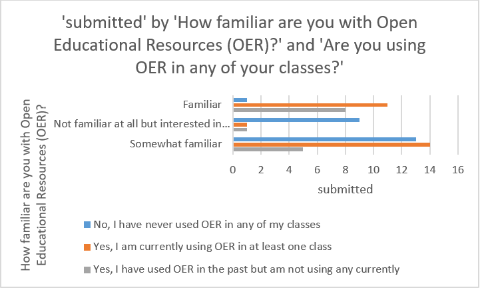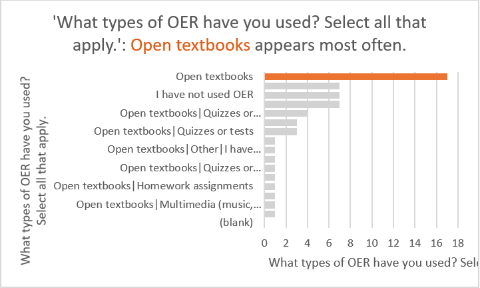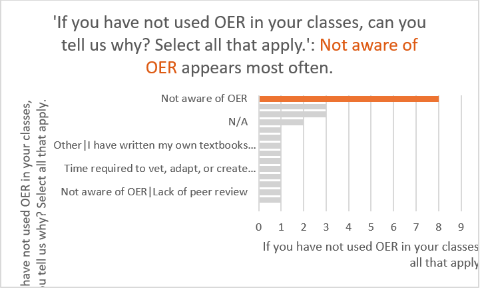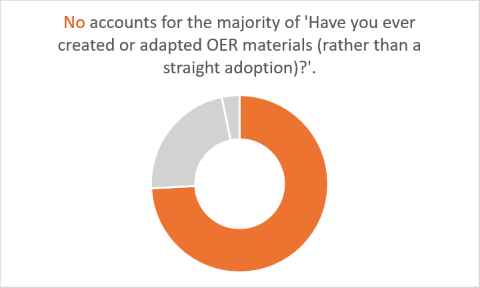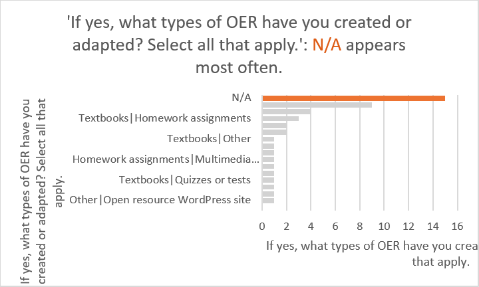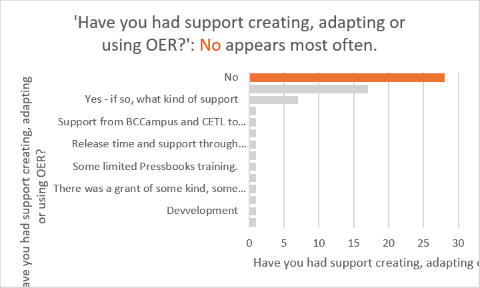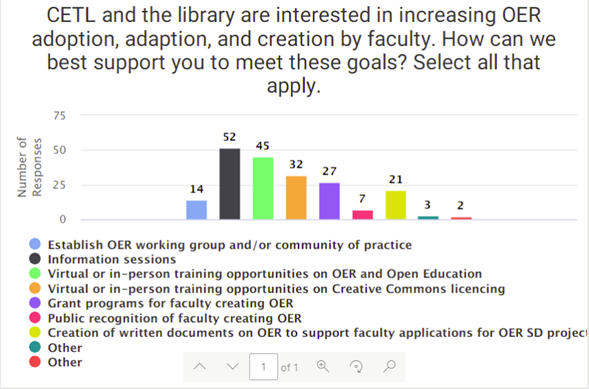And now for the seventh and final story in our ongoing series related to Camosun’s Open Education Sustainability Project: Liz Morch.
Liz teaches in the Dental Hygiene program at Camosun, and her project was “to develop five modules covering basic topics in nutrition that could be used by anybody teaching foundational nutritional courses. Using open technology, we have the opportunity to share learning materials rather than having to (re)create information that should be readily available, leaving more time for instructors to focus on student needs and student interaction.” The five modules Liz created were around the topics of Carbohydrates, Proteins, Lipids, Vitamins, and Minerals. “I think we created five solid modules on those components containing foundational information that anyone could use for their own courses, or adapt for use in their own context, whatever discipline they might be in.”
Using and creating open resources fits well into Liz’s philosophy of teaching. “I think we need to understand today’s student. When I went to university, I didn’t have to work because I was fortunate to have family support and scholarships, so all I did was focus on school. Today, many of our students are balancing work, family commitments, financial constraints and learning challenges, as well as navigating huge volumes of information that they encounter in school and on the Internet. As an instructor, it is important to consider the challenges students face when learning, however every time I push myself to do something different to address this, I’m always amazed at how well students respond!”
Liz believes in sharing the wealth through using open resources as well. “One of the challenges we face as faculty is staying current in our discipline. Every basic nutrition course, no matter what program it is part of, has content focused on proteins, carbohydrates, lipids, vitamins, and minerals. So, instead of creating and taking class time to deliver this common content every time you offer a course, students could complete these existing online modules on their own, and then classroom exercises can focus on amazing discussions because they’ve had the flexibility to learn the content at their own pace and their own time.”
While creating and using open content is a priority for Liz, finding, adapting, or creating OER comes with challenges. “During the semester, it’s very hard to find dedicated time for this kind of work. Even when you dedicate focussed time, it’s amazing how many distractions come your way.” While fortunately for this project Liz was given release time as a result of the grant funding, one other challenge Liz mentioned was the question of how much is enough? “I want it to be extraordinary, so defining the breadth and scope for this project was a bit challenging. I wanted to make sure that it was not solely dental focused, and I also wanted it to be much more interactive, but I ran out of time.”
Despite these challenges, Liz still believes that working with open educational resources is the right thing to do. One of the benefits she sees with her open project is the flexibility her nutrition site can afford students who have a very heavy course load. “For my course within the heavy course load of our dental hygiene program, the end of their final semester students have many large comprehensive projects to complete. So, what I began to consider was how to organize my course to include these nutrition modules so that their work for the course was front loaded. In January, students have quite a bit of time, whereas in April, they are going to be stressed out and maxed out with projects that require considerable time and effort. If I create modules for them to work through on their own, then they can choose to finish 80 or 90 percent of this course in January so they have more time at the end of the term to devote to their final projects.”
When I asked Liz what advice she would have for other faculty wanting to work with open educational resources, she told me “We need to challenge tradition and consider not only a course’s learning objectives, but how to deliver the content in an inspiring flexible manner. We have a responsibility in today’s world, where the volume of information and the speed of change is so great, to consider flexible ways for students to engage with course content so that it becomes more meaningful for them.” Liz says she doesn’t see her role as being “a gatekeeper to knowledge, but rather as someone to bring course content to life.”
What’s next for Liz in the world of Open Education? Well, she tells me she is close to retirement, but “if I could do anything, it would be to mentor new faculty and encourage them to not be afraid to think outside of the box. I have tried many creative approaches over my career most of which have been wonderful with some that helped me learn tools to create the next opportunity. I would love to support other faculty to figure that out, “that would be what I would really enjoy.”

